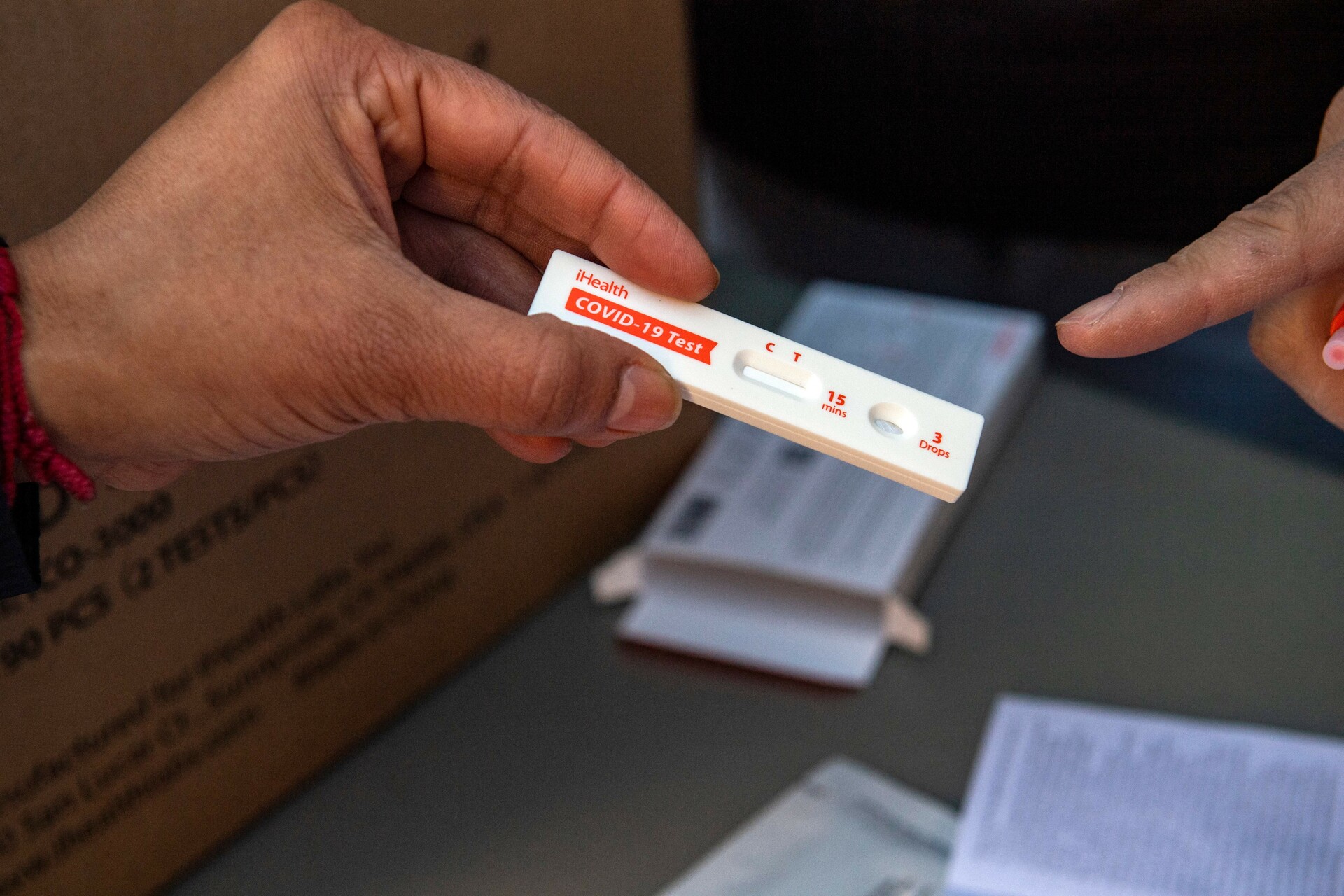This story was updated at 11 a.m. on Tuesday
A new COVID-19 variant is making its way through the Bay Area. But health experts say there’s no need to panic yet.
The XBB.1.16 strain — dubbed “Arcturus” by some online — was added to the World Health Organization’s list of variants of interest in April, and has been detected in California, according to wastewater surveillance systems.
It’s still early, but Arcturus is already “set to be the dominant strain by summer — and the rate of increase is very steep,” Dr. Peter Chin-Hong, an infectious disease expert at UCSF, told KQED.
As COVID continues to evolve with our lives, KQED is monitoring new variants and challenges the virus presents and how to stay safe. Keep reading for what we know so far about XBB.1.16, this omicron subvariant.
Is the Arcturus strain present in the Bay Area?
Yes. The Arcturus variant has been detected in San Francisco, Sacramento and San José, according to wastewater data from Stanford University’s Sewer Coronavirus Alert Network, or SCAN, system.
“We are seeing it more frequently in the more recent samples,” said Alexandria Boehm, a professor at Stanford who oversees the SCAN system. The wastewater data takes two weeks to process, and the most recent showed that 10% of the genomes in the wastewater could be classified as XBB.1.16, i.e. the Arcturus variant.
More recent estimates based on COVID testing among patients at UCSF showed the omicron offshoot variant is now present in about 12% of identified cases of COVID-19, according to Chin-Hong. That’s way up from 2% back on April 1.
Because so many COVID testing resources have been wound down by officials in recent months, the exact level of the virus in the community is difficult to measure. “We are not doing as much surveillance as we used to — but even though we don’t have formal numbers yet, it’s here,” said Chin-Hong.
The good news is that cases of COVID-19, including hospitalizations, are near their lowest levels since the beginning of the pandemic.

How is the Arcturus strain different from previous strains of the coronavirus?
As a strain of COVID, Arcturus is very similar to its predecessors and falls under the BA.2 omicron lineage. But it differs by having an extra protein.
Arcturus is expected to be more transmissible than past variants and that is why it is quickly outcompeting other variants, Chin-Hong said.
Most of what scientists know now about the latest variant comes from India, where it first rose to concern in January. And so far, there is little evidence that infections with this variant are more severe.
“The global risk assessment for XBB.1.16 is low as compared to XBB.1.5 and the other currently circulating variants, at this current time and with available evidence,” a risk assessment report from the WHO (PDF) reads. “No changes in severity have been reported in countries where XBB.1.16 are reported to be circulating.
“In India and Indonesia, there has been a slight increase in bed occupancy numbers,” said the statement. “However, the levels are much lower than seen in previous variant waves.”
What’s the connection between the Arcturus variant and pink eye?
Reports from India have anecdotally connected some cases of the latest variant with conjunctivitis, more commonly known as pink eye, in children who are infected.
While rare, it’s not a totally new response with COVID generally, according to Chin-Hong. About 1% to 3% of all COVID cases have included pink eye symptoms, which include a red coloring of the white part of the eyeball, eye irritation and tears. It can also cause discharge or crust around the eye area.
“Anecdotally, it seems there is more in this subvariant. But a lot of viruses can cause pink eye, like a regular cold virus, so that’s not unusual,” Chin-Hong explained. “Just like how COVID makes your nose run, it can affect other moist surfaces of the body like the nose or mouth, and the eye is one of the places that can get infected. Other viruses as well can cause that.”
In a statement to KQED, the San Francisco Department of Public Health noted this particular element among the symptoms to watch for this spring, saying that “while more research needs to be done regarding the symptoms of this [Arcturus] subvariant, people who are displaying common symptoms of COVID-19, as well as people who have pink eye, should stay home.”

